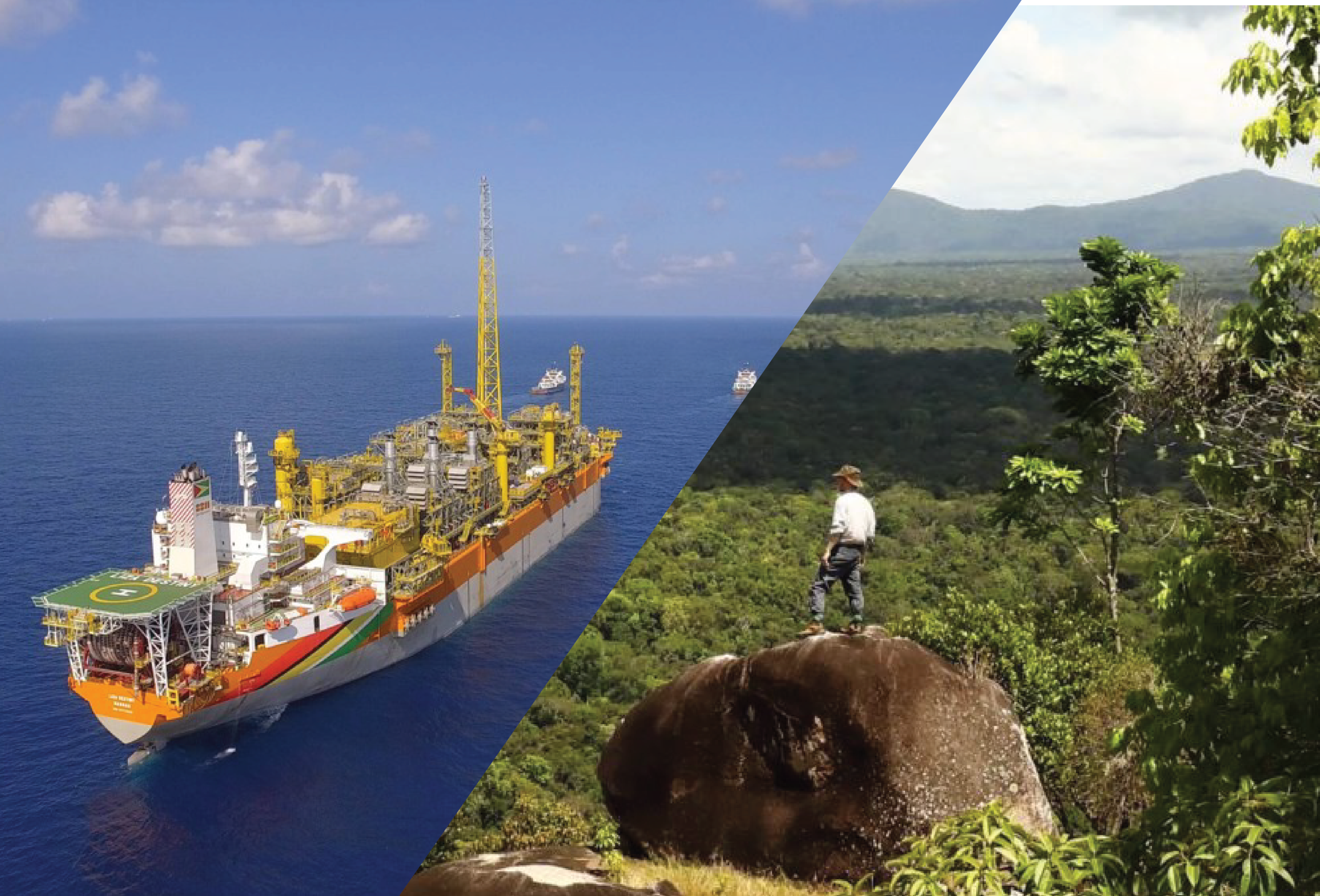Even with a string of massive oil developments being pursued offshore Guyana, the country will remain a net carbon sink for years to come, a study indicated.
Guyana’s Environmental Protection Agency (EPA) requested that ExxonMobil conduct an environmental impact assessment (EIA) as part of the review process for its proposed Hammerhead oil development. Whiptail would be the seventh oil development offshore.
One of the key considerations for Guyana’s Environmental Protection Agency (EPA) in approving such projects is their environmental impact. In addition to the isolated environmental impact of each project, the EPA also considers the cumulative impact of all projects.
The review process for Exxon’s sixth project, called Whiptail, also included an EIA. The assessment for Whiptail considered the cumulative impact of greenhouse gas emissions from up to seven oil developments offshore Guyana, in addition to the Gas to Energy project. This cumulative impact assessment also accounted for emissions from Exxon’s exploration activities and a third-party power plant.
The EIA for Whiptail found that, even with all these operations, the total greenhouse gas emissions would peak in 2028 at 9.7 million tons per year and then steadily decrease to approximately 7.2 million tons per year by the end of the Whiptail Project’s 20-year lifecycle. This decline is attributed to the predicted gradual decrease in production levels for the seven assessed development projects.
For context – Guyana’s 2022 Low-Carbon Development Strategy highlighted that the country’s forests remove 154 million tons of carbon dioxide equivalents per year from the atmosphere. The emissions from Exxon’s projects would only account for approximately 6% of Guyana’s carbon sink capacity. When combined with existing sources in Guyana, which total 4.7 million tons, the total emissions would be 14.4 million tons, the study showed. Thus, even with the extensive offshore oil developments, Guyana would maintain its status as a carbon sink.
The Hammerhead EIA, requested by the government, is expected to reinforce these findings.
Guyana’s forests, covering more than 80% of its landmass, play a critical role in carbon capture and biodiversity services. Recognizing this value, Guyana has monetized its forest conservation efforts by offering forest carbon credits for purchase. In 2022, Hess Corporation announced a significant deal to purchase US$750 million worth of carbon credits from Guyana over ten years.
Hess is a stakeholder in the Stabroek Block, where ExxonMobil is vying to add the Hammerhead project by 2029. It is projected to produce 180,000 barrels of oil per day (b/d), adding to the six already approved. Presently, three of these projects are in production, collectively producing about 630,000 b/d. The remaining three are set to come on stream in 2025, 2026, and 2027, with an expected increase in Guyana’s oil production capacity to about 1.3 million b/d. If approved, Hammerhead could take this capacity to 1.5 million b/d.
The Gas-to-Energy project is also expected to achieve first gas in 2025, with initial production of 50 million cubic feet of gas per day.



